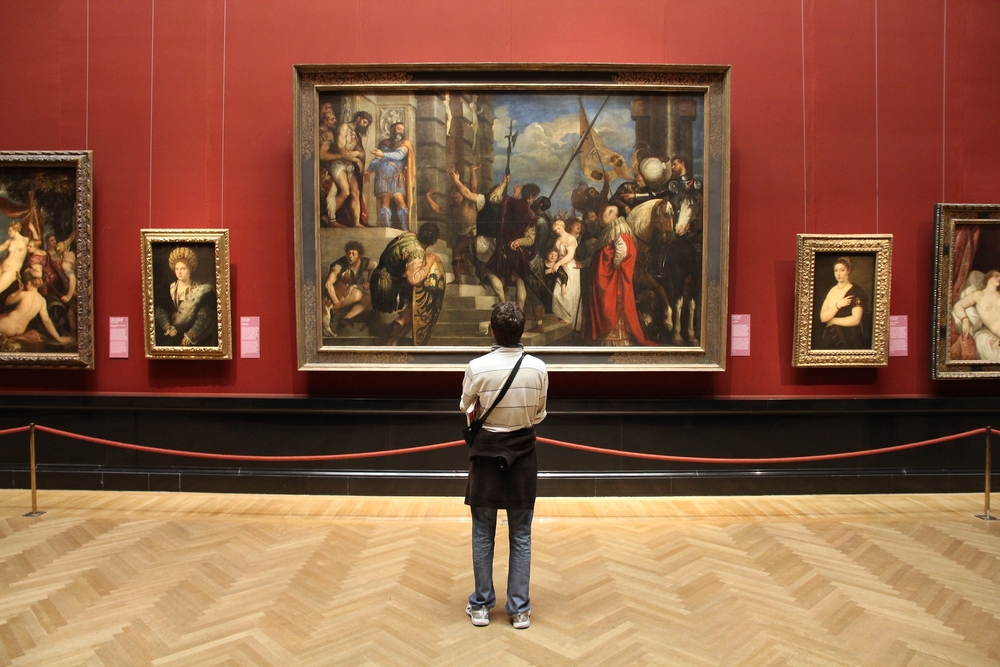Among the rarest qualities of the late American filmmaker Peter Bogdanovich, who died in January at age 82, was his conviction, repeatedly stated and consistently in evidence in his work, that the art of film had its own set of rules and precedents. Close-ups, camera movements, and cuts weren’t meant to be used willy-nilly, Bogdanovich reckoned, but in the manner intended by those who developed such techniques.
“I’m afraid it’s largely a twentieth-century critical fashion to value originality as the main criterion of a work of art,” the director of The Last Picture Show and Paper Moon once wrote. “And yet, Ecclesiastes tells us, ‘There is no new thing under the sun,’ and around 1785 a certain Mme. Bertin, milliner to Marie Antoinette, is supposed to have said, ‘There is nothing new except what is forgotten.’”
The pleasure of experiencing works of art that are orderly, coherent, and precise is familiar to anyone who has heard a concerto by Johann Sebastian Bach, read a short story by O. Henry, or taken in a painting by one of the Old Masters. That pleasure is alive to the art critic Jed Perl, whose engaging and provocative new book, Authority and Freedom: A Defense of the Arts, ranges over a variety of media, including the visual arts, literature, and music, to consider the extent to which artists rely on restraints—the sort of “rules of the game” that Bogdanovich intuited and followed—while also depending on emancipation from those restraints.
“The authority of the rectangle for the painter or the conventions of beginning, middle, and end for the fiction writer are general, societal, traditional,” writes Perl, who demonstrates his own delight in the solid infrastructure that supports great works that might be assumed to be nothing more than acts of pure imagination. Perl writes of being carried away by the wit and storytelling in Jane Austen’s novels but also being dazzled by their shapely design. “I was also conscious of the exquisite structuring of each novel’s opening pages, the artfulness with which characters were introduced, and the elegance of the everything-wrapped-up-with-a-bow endings,” he explains.
Perl rightly pushes back against the popular clichés associated with artistic creation—“the painter’s canvas tossed angrily aside; the ashtray full of cigarettes; the personal hygiene shot to hell”—and instead argues that artists ought to be regarded as deliberate makers: men and women as practical as those who make buildings or laws. “There is no denying the materiality of the arts,” writes Perl, who again and again stresses the fundamentals from which even the most seemingly innovative work must spring. “We believe in the unearthly fantasy of Bosch’s Garden of Earthly Delights because of the graphic precision with which each element is realized,” he writes. Among Perl’s most persuasive case studies is Aretha Franklin, whose popular music is clearly tethered to the gospel music tradition in which she was reared. “I did sing in the young people’s choir in my father’s church—I started there,” Franklin once said. “And from there, here.”
For those whose notions of art lean toward the traditional, Perl’s book will inevitably seem like the work of a fellow traveler. “The reassertion of older forms of authority can be a very personal gesture,” writes Perl, who also takes contemporary consumers of art to task for their default fondness for what he calls “avant-garde attitudes.” “But,” Perl correctly states, “great artists are not necessarily contrarians.” Very wise; very true.
Yet Perl’s picture of the push-pull between authority and freedom—between the basic toolbox needed to create anything and the personal vision required to make something memorable—ends up being a bit of a hash. Counterintuitively, Perl points to painter Piet Mondrian as an example of an artist who developed his own form of authority through his severely minimalist canvases. “He believed that with his verticals and horizontals and primary colors he could achieve an emotional and expressive range as great as the Old Master,” Perl writes, but that raises the question: If the traditional narrative satisfactions of Jane Austen and the radical pared-down work of Mondrian are both said to engage with authority, what do we even mean by “authority”? Whose authority? The authority of artistic precedents or the authority an artist places on himself?
In fact, in surveying such a wide swath of art, Perl is not advocating for one or the other but for all: His is a variation on the “art’s for art’s sake” argument. Perl approvingly quotes a letter by the great Catholic novelist Flannery O’Connor, who, in expressing distaste for self-seriously moralistic fiction, made a similar argument. “Art is wholly concerned with the good of that which is made; it has no utilitarian end,” O’Connor said. “If you do manage to use it successfully for social, religious, or other purposes, it is because you make it art first.” Fair enough, and Perl is to be applauded for walking and chewing gum at the same time: He rightly sees no contradiction between, as he puts it, carrying a copy of Joyce’s Dubliners to a march against the Vietnam War, or admitting that Eliot and Pound were reactionaries while insisting that they were nonetheless among “the great modernists.”
During the years when Perl came of artistic age, censorship seemed like a remote fear; he found the film version of Fahrenheit 451 “a little silly” in its concerns about book burning. Of course, the situation today is far different: Art and artists that offend the sensibilities of the elite are threatened with cancelation. For Perl, the appreciator of both the traditional and the avant-garde, this is an untenable situation. Following the example of W.H. Auden, Perl persuasively points to the case of William Butler Yeats, whose poetry remains captivating in spite of his pitiable endorsement of fascism in the 1930s. “Whatever Yeats believed ought to happen in the world—and that included political developments that clearly horrified Auden—he remained engaged first and last with what was happening in his poetry,” Perl writes.
This is compelling enough, as is Perl’s grand summation on behalf of experiencing the arts independent of the straitjackets of categories: “When we rush to label [the arts]—as radical, conservative, liberal, gay, straight, feminist, Black, or white—we may describe a part of what they are, but we’ve failed to account for their freestanding value,” Perl writes.
Yet, like Perl’s mushy sense of freedom and authority, this old-fashioned liberal conception of the independence of art from social or political tests comes across as a bit of a dodge. Perl says at the outset that he wants to “release art from the stranglehold of relevance,” but a work of art is always either one thing or another thing—it is either entertainingly edifying, as in the novels of Austen, or boringly pretentious, as in the canvases of Mondrian. Any book that opposes cancel culture is likely to be welcomed on the right, but this one too eagerly embraces a small-c catholic vision of the arts that erases the genuine differences between the monotonous erotica of Henry Miller and the rigorous moral vision of Flannery O’Connor. O’Connor was surely right that art must be art before it is good, but we should summon the strength to say that it ought to be good, too.

